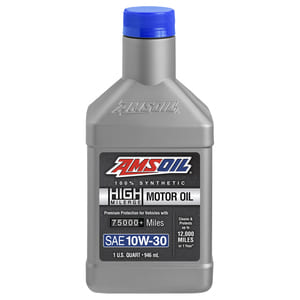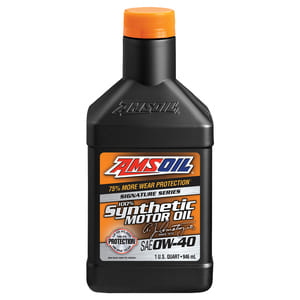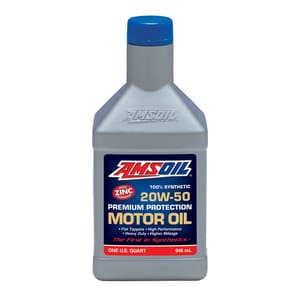When driving, there’s nothing more alarming than seeing your oil pressure gauge drop to zero. This can indicate a range of issues from a faulty oil pressure sending unit to severe engine problems. Understanding the causes of low oil pressure is crucial for ensuring your vehicle’s longevity and performance.
The Importance of Oil Pressure
Oil pressure is the force that pushes oil through the engine’s lubrication system, ensuring that all moving parts are properly lubricated. Proper oil pressure is vital for engine health, preventing friction and heat buildup that can cause severe damage. Common oil pressure ranges vary by vehicle, but typically, you want to see consistent readings that align with your manufacturer’s specifications.

Signs of Oil Pressure Problems
Monitoring oil pressure is essential for detecting potential issues early. Some common signs of oil pressure problems include:
- Oil pressure gauge dropping to zero
- Warning lights on the dashboard
- Unusual engine noises
Other Potential Symptoms of Low Oil Pressure
- Engine knocking or ticking sounds
- Reduced engine performance
- Overheating engine
- Oil leaks
Electrical vs. Mechanical Oil Pressure Gauges
Oil pressure gauges come in two main types: electrical and mechanical. Understanding their differences can help you identify potential false readings.
Electrical Gauges
Electrical oil pressure gauges use electrical signals to display pressure readings. While convenient, these gauges can sometimes give false readings due to wiring issues or faulty sending units.
Mechanical Gauges
Mechanical gauges, on the other hand, provide direct readings from the engine’s oil system. These gauges are generally more reliable but can be more challenging to install and read.

How to Perform a Manual Oil Pressure Test
To accurately assess oil pressure, performing a manual oil pressure test is recommended. Here’s how you can do it:
Tools Needed
- Manual oil pressure gauge
- Wrench set
- Manufacturer’s oil pressure specifications
Step-by-Step Process
- Locate Oil Pressure Port: Find the oil pressure port on your engine, typically near the oil filter.
- Remove Oil Pressure Sending Unit: Using a wrench, carefully remove the oil pressure sending unit.
- Install Manual Gauge: Attach the manual oil pressure gauge to the oil pressure port.
- Start Engine and Observe Readings: With the gauge installed, start the engine and observe the oil pressure readings.
- Ensure you refer to your manufacturer’s specifications to determine the expected oil pressure ranges for your vehicle.
Factors Affecting Oil Pressure
Several factors can influence oil pressure readings, including:

Engine Temperature
As engine temperature increases, oil viscosity decreases, potentially lowering oil pressure.
Environmental Conditions
- Ambient Temperature: High ambient temperatures can thin the oil, reducing pressure.
- Altitude: Higher altitudes can affect oil pressure due to changes in atmospheric pressure.
Driving Conditions
Towing: Increases engine load, which can affect oil pressure.
Air Conditioning Use: Adds additional load on the engine.
Stop-and-Go Traffic: Causes fluctuating engine temperatures, influencing oil pressure.
Engine Wear and Tear
Over time, engine components wear down, potentially causing oil pressure issues. Regular maintenance is vital to mitigate this.

The Role of Oil in Modern Engines
Modern engines rely heavily on oil to operate various components and systems, including:
Variable Valve Timing Systems: These systems depend on oil pressure to adjust valve timing.
Oil-Driven Components: Various engine components are driven by oil pressure.
Proper Oil Flow: Ensuring sufficient oil flow through small passages is crucial for engine health.
Heat and Oil Pressure Relationship
Heat plays a significant role in oil pressure. Here’s how increased temperature impacts it:
How Heat Impacts Oil Viscosity
As heat rises, oil viscosity decreases, making it thinner and potentially reducing pressure.
Effect of Increased Temperature on Oil Pressure
In hotter conditions, you may observe lower oil pressure due to the thinning of the oil. This makes selecting heat-resistant oil formulations essential.

Choosing the Right Oil for Maintaining Proper Pressure
Selecting the right oil for your vehicle helps maintain optimal pressure. Factors to consider include:
Importance of Following Manufacturer Recommendations
Always adhere to the oil specifications recommended by your vehicle’s manufacturer.
Synthetic vs. Conventional Oils
Synthetic oils offer better performance under extreme conditions and longer intervals between oil changes compared to conventional oils.
Viscosity Grades and Their Impact on Oil Pressure
Choosing the correct viscosity grade is crucial. Thicker oils may provide higher pressure but could reduce flow, while thinner oils might flow better but at lower pressure.
AMSOIL Products for Optimal Oil Pressure
AMSOIL provides a range of products designed to maintain optimal oil pressure under various conditions.
Benefits of AMSOIL Products
- High-quality base oils that resist breakdown.
- Advanced formulations that handle extreme temperatures.
- Extensive testing to ensure performance.
Key AMSOIL Products for Different Vehicle Types
Signature Series Synthetic Motor Oil: For high-performance and long oil change intervals.
XL Synthetic Motor Oil: For extended oil change intervals.
OE Synthetic Motor Oil: For those following standard oil change intervals.
Consequences of Low Oil Pressure
Having low oil pressure can lead to severe consequences, including:
Engine Damage Risks: Lack of lubrication can cause parts to wear out faster.
Reduced Engine Performance: Engine may not perform optimally under low pressure.
Potential for Complete Engine Failure: Persistent low oil pressure can lead to total engine breakdown.

Preventative Maintenance for Oil Pressure Issues
Regular preventative maintenance can help mitigate oil pressure problems. Here are some tips:
Regular Oil Changes: Follow the manufacturer’s recommended oil change intervals.
Oil Level Checks: Regularly check and maintain the proper oil level.
Use of High-Quality Oil Filters: Ensure oil filters are clean and of high quality.
Engine Inspections: Routinely inspect for leaks or wear.
Troubleshooting Oil Pressure Problems
When experiencing low oil pressure, troubleshooting is necessary to identify and address the issue.

Common Causes of Low Oil Pressure
- Faulty oil pressure sending unit
- Worn engine bearings
- Oil pump failure
- Clogged oil filter
Diagnostic Steps for Identifying Issues
- Check oil levels and quality.
- Inspect the oil pressure sending unit.
- Perform a manual oil pressure test.
- Check for oil leaks or worn engine parts.
When to Seek Professional Help
If troubleshooting doesn’t resolve the issue, it’s best to seek the assistance of a qualified mechanic to avoid further damage.

